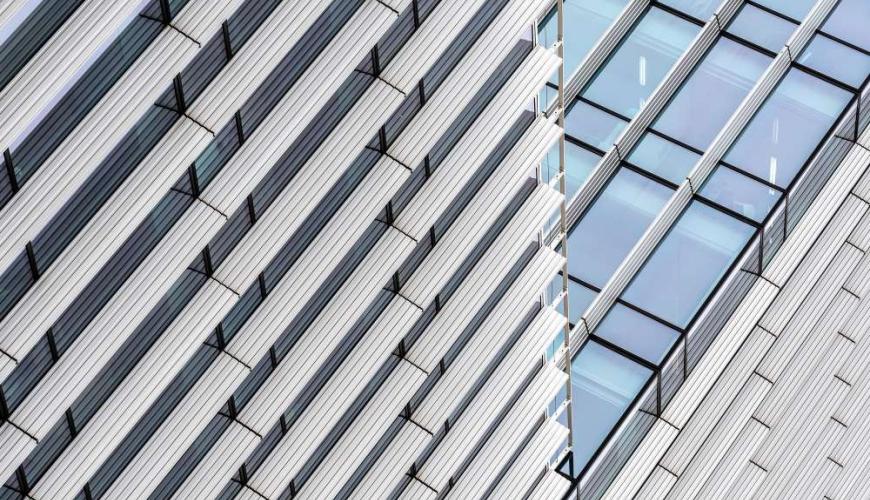Investing in Construction: The Pros and Cons of Aluminium Composite Panels
- 23 October 2024 6:52 AM

Contents
Investing in modern construction is always a smart move, especially when choosing the right materials for long-term value. Taking out a loan to fund these projects can provide significant returns, particularly with the use of advanced materials like aluminium composite panels. These panels are widely used in contemporary architecture, offering a perfect blend of durability and aesthetic appeal.
Aluminium cladding is usually the top choice among the materials used in contemporary buildings for builders and designers. Mostly employed in urban projects ranging from luxury homes to business structures, this material is well-known for its pleasing look and robust function. Still, it has some benefits and drawbacks, just as any architectural element would. With an eye on how it could affect building projects in places like Sydney, this article will help you evaluate the benefits and drawbacks of aluminium composite cladding.
Aluminium Composite Cladding: Definition
First, one has to know what composite cladding is before considering its pros and drawbacks. Usually plastic, this kind of cladding consists of two thin layers of aluminium sheets sandwiching a non-aluminum core. The final effect is a panel with mixed durability and less aluminium weight. Especially common in contemporary architectural designs for facades, internal walls, and even signage, aluminium composite panels in Sydney offer amazing features.
-
Low Weight and Durability
Sydney's main benefit from an aluminium panel is its low weight. Installation and handling are simpler compared to more conventional materials like concrete or brick. Although the material is light, it is quite durable and resistant to many outside elements like corrosion, UV radiation, and rain, so it is a great option for structures in Sydney's often hostile environment.
-
Aesthetic Beauty
Architects have several design choices with aluminum composite cladding. Any structure may seem sleek and contemporary by customizing the panels in numerous colors, coatings, and even textures, thereby improving its appearance. Especially contemporary architecture enjoys the simple lines and smooth surfaces of these panels. Aluminum panels in Sydney fit very well in Sydney, where design trends push toward simplicity and utility.
-
Efficiency of Energy
Furthermore vital is the role this material plays in the energy economy. Many systems of aluminum composite cladding offer insulating qualities used to control building interior temperature. The material keeps the structure cool in the summer and warm in the winter, which over time reduces energy expenses.
-
Resilience Against Fire
Modern advancements in fire safety have made numerous manufacturers able to provide fire-resistant versions of composite cladding. These panels provide extra structure protection by stopping the spread of flames and thereby preventing a threat. Although earlier iterations of the material have been under close inspection for fire hazards, new innovations have solved these issues, thus dependable fire-resistant composite cladding is now available.
Are There Any Drawbacks to Be Aware Of
Although the aluminium composite panel in Sydney offers several advantages, some builders and developers might find the initial outlay difficult. Generally speaking, the material's price is more than that of more traditional choices including vinyl or wood siding. This needs to be balanced, however, with the long-term benefits from the energy economy and durability that might outweigh the initial outlay. What else:
Maintenance: Although composite cladding is robust, frequent maintenance guarantees the best form and look. Particularly in Sydney, the panels might gather dust, filth, and pollution. Panel cleaning is not too difficult, however, it does need a care job to make sure they remain aesthetically pleasing and stop fading with time.
Environmental Issues: Sydney panel's manufacture calls for perhaps not always environmentally favorable elements. Usually composed of plastic or another synthetic substance, the core creates recycling issues. Although some businesses are developing more environmentally friendly panels, given their effects on the surroundings, present choices should be carefully evaluated in terms of eco-friendliness.
Possible Fire Risk: Although there are fire-resistant versions of aluminium composite cladding, past events have shown that non-compliant panels have been used, therefore creating fire risks. Especially in large buildings and very congested areas, it is rather important to make sure the panels fulfill all safety requirements. Builders and contractors should always use certified, fire-rated products in order to completely remove any hazards.
Sydney Constructed Projects: Use Cases
Panel built of aluminium composite has demonstrated to be a versatile choice in a city where coastal homes to skyscrapers coexist. Because of its modern and elegant appearance, as well as its resistance against many weather conditions, home and commercial projects, find great appeal.
Finally
Modern building projects generally employ aluminium composite cladding as it offers various benefits like energy efficiency, aesthetic flexibility, and durability. Two potential drawbacks are financial and environmental ones. However, particularly in terms of building strong, energy-efficient, modern buildings, Sydney builders and designers might find great advantages in using composite panels.
When you weigh the benefits against the disadvantages, think about the specific needs of your project and how this component fits into your overall design and budget. Aluminium cladding may provide your building project long-term value as well as the performance and style you want, whether you are building a commercial high-rise or a modern cottage.

